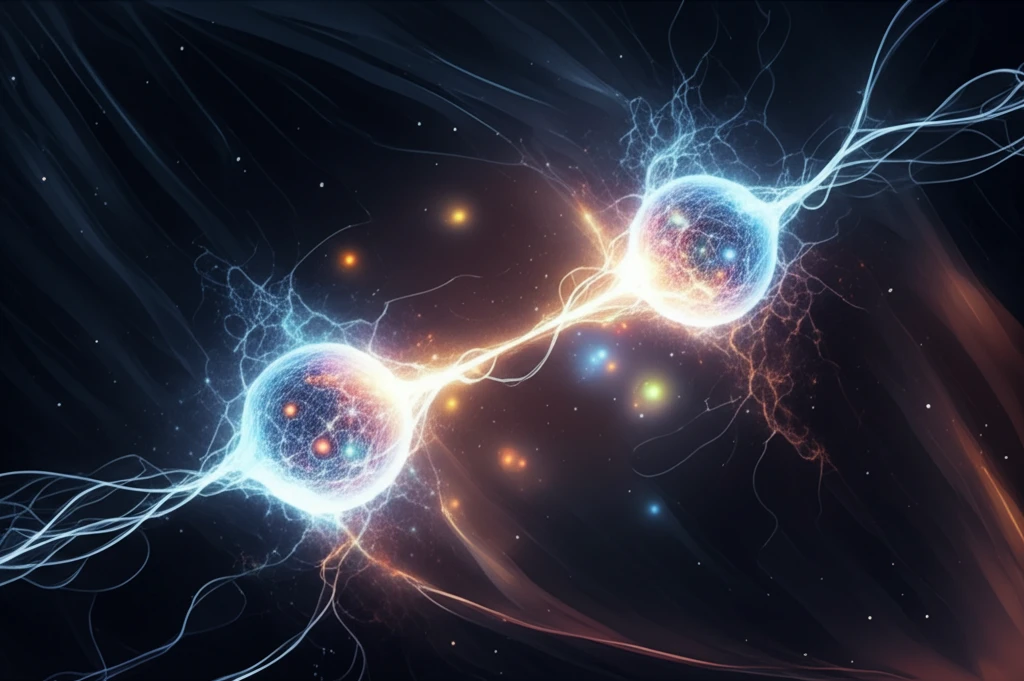
Quantum Quirks: Are Subatomic Particles Individuals or Indistinguishable Entities?
"Explore the mind-bending world of quantum mechanics, where the very nature of individuality is questioned. Are quantum particles unique individuals, or are they part of an indistinguishable collective?"
Quantum mechanics, the theory governing the subatomic world, presents some truly bizarre concepts. One of the most perplexing is the question of whether the particles that make up our universe—electrons, photons, and the like—are truly individuals in the classical sense. Do they have unique identities, or are they essentially interchangeable, indistinguishable entities?
This question isn't just a matter of abstract philosophy. It has deep implications for how we understand the fundamental nature of reality and how we interpret the mathematical formalism of quantum mechanics. The standard equations of quantum mechanics are compatible with both interpretations: particles as individuals and particles as non-individuals, without theory choosing or signaling decisively which assumption we must embrace.
The debate arises because quantum mechanics often describes particles in ways that seem to defy our everyday intuition. Unlike macroscopic objects, quantum particles can exist in multiple states at once (superposition) and can be linked together in strange ways, so that measuring the properties of one instantly influences the properties of the other (entanglement). These phenomena challenge our classical notions of identity and individuality, leading some physicists and philosophers to question whether these concepts even apply at the quantum level.
The Core of Individuality in Quantum Mechanics

The concept of individuality is deeply ingrained in our everyday experience. We perceive ourselves and the objects around us as distinct entities, each with its own unique properties and history. This intuitive understanding of individuality is formalized in classical physics through the principle of identity, the PII: if two objects share all the same properties, they are identical.
- The Leibniz’s Principle of Identity of Indiscernibles: This principle states that if two objects have all the same properties, they are the same object. Quantum mechanics challenges this, as particles can have identical properties yet still be considered distinct.
- Quantum Statistics: Quantum particles obey different statistical rules than classical objects. For example, bosons (like photons) can occupy the same quantum state, while fermions (like electrons) cannot. This difference in statistical behavior reflects the underlying indistinguishability of quantum particles.
- The Role of Observation: In quantum mechanics, the act of measurement plays a crucial role. Some interpretations suggest that it is only when we observe a quantum system that its properties become definite. This raises questions about whether particles have definite identities when they are not being observed.
The Metaphysical Implications
The question of quantum individuality has profound implications for our understanding of reality. If quantum particles are not individuals, then our classical notions of identity and existence may need to be revised. This could lead to new ways of thinking about the relationship between the quantum world and the macroscopic world we experience every day. Embracing the concept of non-individuality is more plausible as it opens up the possibilities for ontological pluralism. This exploration into the quantum world calls into the question not just how reality is created at a subatomic level, but also what our reality is as an object in space.
